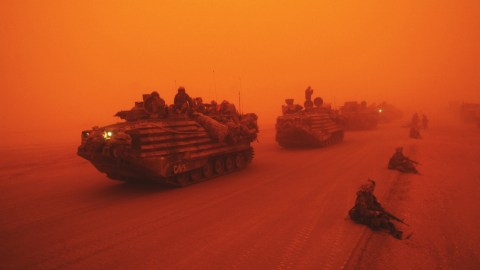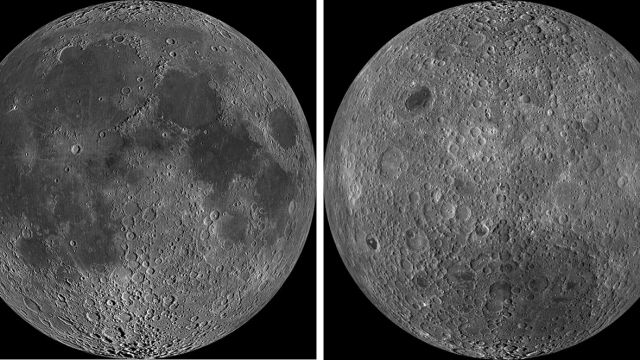Do These Images Show a ‘Beautiful’ Side to War?

Like so many of us, author David Shields followed news of the Afghanistan and Iraq wars through the pages of The New York Times, specifically the front page and the striking, full-color photography designed to catch the eye and bring the war home. “My attraction to the photographs evolved into a mixture of rapture, bafflement, and repulsion,” Shields confesses in his new book, War Is Beautiful: The New York Times Pictorial Guide to the Glamour of Armed Conflict. As the wars and their coverage continued, Shields “realized that these photos glorified war through an unrelenting parade of beautiful images whose function is to sanctify the accompanying descriptions of battle, death, destruction, and displacement.” In War Is Beautiful, Shields tries to rip the same veil from our eyes and reveal these photos for what they really are — images that make war too pretty for our own good that add up to a national fatal attraction.
But isn’t The New York Times the home of the “lamestream” media rife with godless, anti-establishment liberals? Shields says no; rather, “the Times, though considered ‘liberal,’ never strays far from a normative position,” namely the “governing ethos … that glamourized war and the sacrifices made in the service of war.” Shields sees the cozy relationship between government power and the establishment media resulting in the Times and others “know[ing] precisely what truth the power wants told and then print[ing] this truth as the first draft of history.” Photography “writes” this first draft of history most vividly and convincingly. “The program of the photos is the same as that of the Iliad,” Shields concludes, citing the oldest source of war propaganda in the book, “the preservation of power.”

Shields took his suspicion about the Times front-page war photos and carefully examined them going all the way back to 2001. Finding his suspicion troublingly confirmed, Shields felt compelled to write War Is Beautiful as “witness to a graveyard of horrendous beauty.” The more you look at Shields’ selection of images (and the categories he organizes them under to great effect), the deeper you’ll find yourself lost in that same graveyard — entranced by the beauty, yet troubled by the horror hidden beneath. For example, despite war photojournalist Ashley Gilbertson calling Iraq “a flat, ugly, Middle Eastern country with a shitload of oil,” he and others still managed to produce through skill and technology captivatingly beautiful images such as Ozier Muhammad’s photo of American tanks in a reddish-golden sandscape (shown above). Such pictures (which Shields lumps together under “Nature”) trick the eye to trick the heart and mind to see something natural and more beautiful than reality’s truer, uglier brutality.

For the category “Playground,” Shields writes, “War is the playground that authorizes the male psyche to exercise its passions.” Looking at Chris Ison’s photo of soldiers practicing driving all-terrain vehicles over the dunes of Kuwait (shown above), you can almost hear them hooting and hollering with joy. War, amazingly, becomes fun, which makes us forget the price being paid in lives and treasure. Not for nothing did the standard military jargon for the Middle East theaters of war become “the sandbox.” Here, photography transforms grown men into boys “playing” war games and, by extension, inviting us to play along with the deception.

For those with an art history background or just a built-in visual library of visual tropes of Western civilization, many of the photos in War Is Beautiful seem to echo images of the past. For example, Joao Silva’s photograph of a “professional body washer” preparing a bombing victim for a proper Muslim burial (shown above) provides just one of the many Renaissance-like images Shields groups under “Pieta.” In this case, the body of the dead Iraqi stands in for the dead Christ. In other images in this group, children or soldiers play the Christ role, with others serving as the Virgin Mary holding, caring, and mourning the loss of life. Regardless of whether the photographers intentionally framed these photos in such an art historical way, the echo effect resonates powerfully, tugging at our heartstrings and turning tragedy into art.

In a short essay complementing Shields’ introduction, Dave Hickey digs deeper into the art historicity of these photos. For Hickey, these photos “are no longer ‘lifelike,’ but rather ‘picture-like.’” Whereas combat photography up through World War II documented violence for the home front in the name of education to elicit empathy and support, Hickey sees today’s combat photography as acting differently and serving a different purpose. World War II combat photography used what Hickey calls “the ‘snapshot esthetic’: the blur, the swipe, and the flying dirt” — all natural results of photography on the fly. Combat photography today, however, deliberately uses these effects, thus creating photos “aestheticized or anesthetized.”
Hickey says photography such as the blurred soldiers racing about in Rodrigo Abd’s picture (shown above) “will not create new art in its wake, because it has been made out of art.” The self-consciousness of modern combat photography robs it of authenticity and the ability to convey truth. “The Western pictorial tradition intervenes between the image and the beholder,” Hickey argues, thus turning every combat image into ancient myth before it can exist as present truth.

Perhaps the most damning section of War Is Beautiful is the one titled simply “Movie.” Mohammed Abed’s photo of a Palestinian boy in an American football jersey framed by a burning vehicle (shown above) seems like a Jerry Bruckheimer production minus the Top Gun theme. War becomes just another version of our favorite violent movies or video games, rather than the reverse. The New York Times becomes just another provider of “war porn” to keep the masses happy and clapping for more.
“It is well that war is so terrible,” Confederate General Robert E. Lee once told one of his officers, “otherwise we should grow too fond of it.” David Shields’ War Is Beautiful: The New York Times Pictorial Guide to the Glamour of Armed Conflict charges Americans with growing too fond of war through their complicity with the media’s visual cheerleading. “Who is culpable?” Shields asks. “We all are; our collective psyche and memory are inscribed in these photographs.” He blames the media for playing these games, but blames us more for playing along. Vowing himself never to read the Times again, Shields calls on us to do the same. Like Chris Hedges’ War Is a Force That Gives Us Meaning, Shields’ study compels us to ask how we use war as life by other means and to break through the frames that hold us and our foreign policy from pursuing other, truly beautiful solutions.
—
[Image at top of post: Photo Credit: Mohammed Abed/Agence France-Presse-Getty Images. From War is Beautiful by David Shields, published by powerHouse Books.]
[Many thanks to powerHouse Books for providing me with the images above from and a review copy of David Shields’ War Is Beautiful: The New York Times Pictorial Guide to the Glamour of Armed Conflict.]
[Please follow me on Twitter (@BobDPictureThis) and Facebook (Art Blog By Bob) for more art news and views.]





